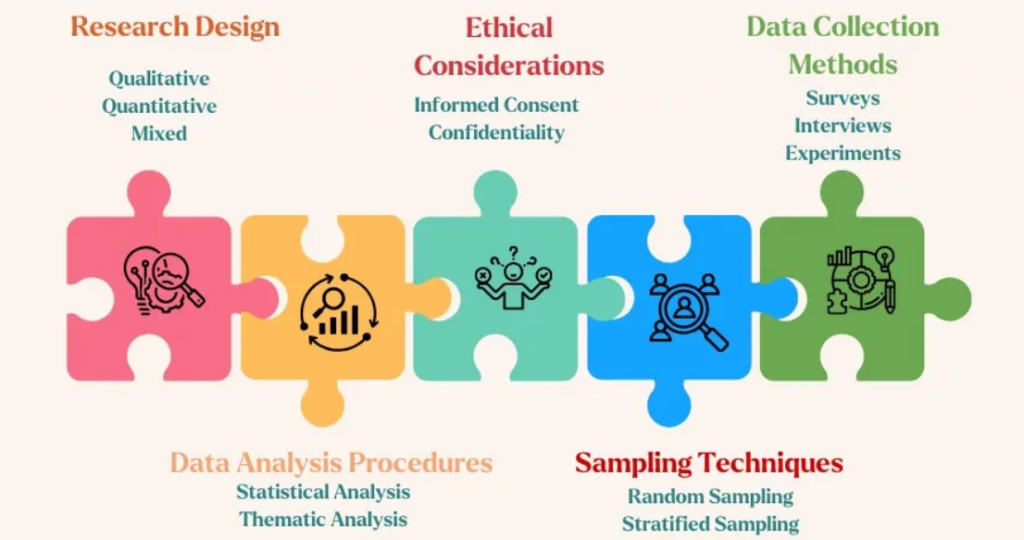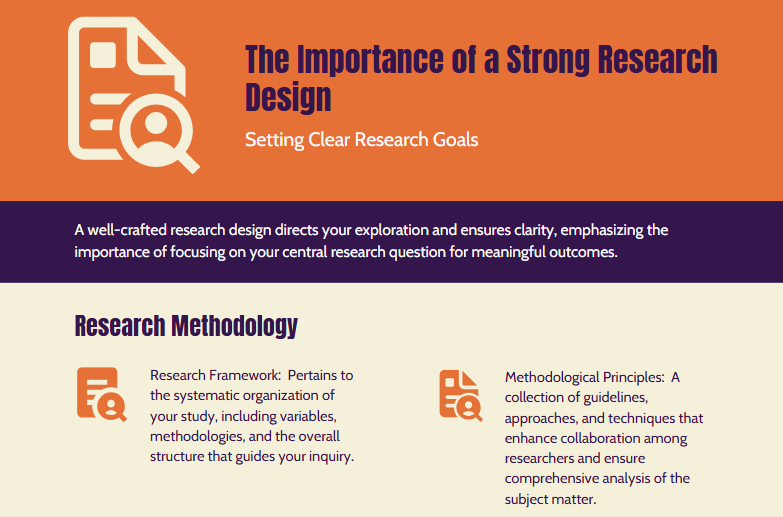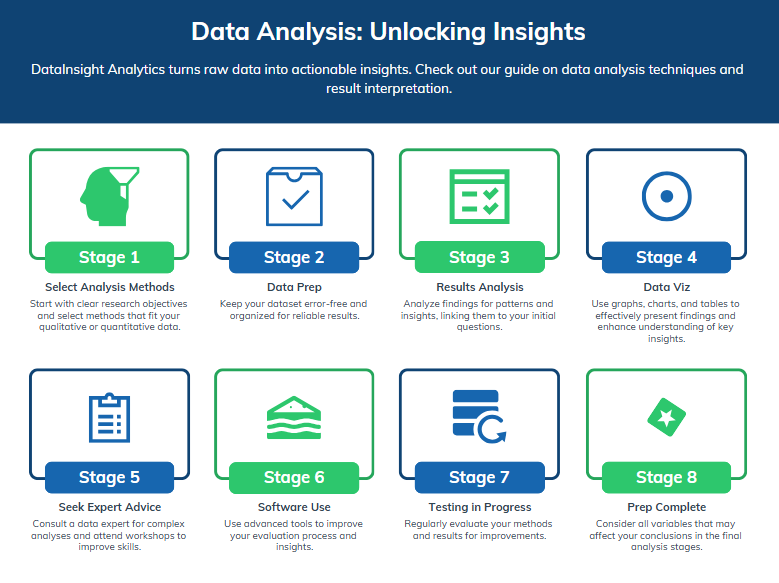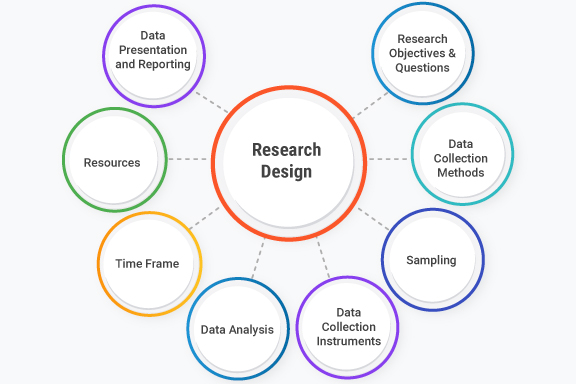The dissertation, the pinnacle of academic achievement, stands as a formidable challenge. Its successful completion demands not only comprehensive knowledge but also a meticulously crafted research design.
This article delves into the intricacies of constructing a robust dissertation research design, providing a roadmap for navigating this essential stage of your journey.
The Foundation: Defining Your Dissertation Research Design
Your dissertation research design is the blueprint that guides your research journey, ensuring a coherent and structured investigation. It outlines the methodology you will employ to address your research question, specifying the approach, methods, and data analysis techniques you will utilize. A well-defined dissertation research design serves as a compass, preventing you from straying off course and ensuring the validity and reliability of your findings.
Steps to Writing a Robust Dissertation Research Design
Crafting Your Research Design: A Step-by-Step Approach
- Define your Research Problem and Question: The cornerstone of your dissertation research design is a clear and concise research problem. This problem should be specific, relevant, and researchable, setting the stage for your investigation. Your research question, directly derived from the research problem, should be focused and answerable through your chosen research approach.
- Determine Your Research Methodology: The heart of your dissertation research design lies in choosing the appropriate research methodology. Common methodologies include:
- Quantitative Research: Utilizes numerical data and statistical analysis to test hypotheses and identify patterns.
- Qualitative Research: Employs non-numerical data, such as interviews, observations, and text analysis, to explore complex phenomena and uncover underlying meanings.
- Mixed Methods Research: Combines both quantitative and qualitative methods to gain a comprehensive understanding of the research problem.
- Select Your Research Design: The choice of research design depends on your research question and methodology. Some popular research designs include:
- Experimental Design: Involves manipulating variables to study cause-and-effect relationships.
- Survey Design: Collects data through questionnaires or interviews from a representative sample.
- Case Study Design: In-depth analysis of a specific individual, group, event, or situation.
- Grounded Theory Design: Develops theories from data through systematic analysis.
- Identify Your Data Sources and Data Collection Methods: Your dissertation research design should clearly articulate the sources of data you will utilize. This may include:
- Primary Data: Collected directly from your research participants or through observation.
- Secondary Data: Existing data from sources such as published reports, archives, or databases.
- Outline your Data Analysis Techniques: The dissertation research design should detail how you will analyze the data collected, taking into account the research methodology and design chosen. This might involve:
- Statistical analysis: For quantitative data, statistical software is used to analyze the data and test hypotheses.
- Thematic analysis: For qualitative data, themes and patterns are identified through a systematic analysis of the data.
- Develop your Timeline and Budget: A comprehensive dissertation research design includes a realistic timeline and budget for your research project. This helps ensure that you have sufficient time and resources to conduct your research effectively.
- Address Ethical Considerations: Your dissertation research design must adhere to ethical guidelines, ensuring the safety and well-being of research participants, and protecting their privacy.

Dissecting the Different Types of Dissertation Research Designs
1. Exploratory Research Design:
- Purpose: To explore a research problem, gather preliminary information, and develop hypotheses.
- Approach: Employs qualitative methods, such as interviews, focus groups, or observation, to gather rich and nuanced data.
- Example: A dissertation exploring the experiences of first-generation college students might use exploratory research to understand their unique challenges and perspectives.
2. Descriptive Research Design:
- Purpose: To describe a phenomenon, population, or situation in detail.
- Approach: Employs quantitative methods, such as surveys, to gather data and provide a comprehensive picture of the subject.
- Example: A dissertation investigating the demographics and socio-economic characteristics of a particular region might utilize descriptive research to provide a detailed profile of the population.
3. Explanatory Research Design:
- Purpose: To explain the relationship between variables and test hypotheses.
- Approach: Employs quantitative methods, such as experiments, to study cause-and-effect relationships.
- Example: A dissertation examining the impact of a new educational intervention on student performance might use explanatory research to determine the effectiveness of the intervention.
4. Predictive Research Design:
- Purpose: To predict future outcomes based on past or current data.
- Approach: Employs statistical models and forecasting techniques to identify patterns and predict future trends.
- Example: A dissertation investigating the factors influencing voter turnout in future elections might use predictive research to model voter behavior based on past data.
5. Action Research Design:
- Purpose: To identify and solve practical problems in real-world settings.
- Approach: Employs iterative cycles of planning, action, observation, and reflection, with a focus on practical solutions.
- Example: A dissertation exploring ways to improve student engagement in a particular classroom might use action research to implement interventions and assess their impact.
The Significance of a Comprehensive Dissertation Research Design
A well-crafted dissertation research design is paramount to the success of your dissertation. It provides a roadmap for your research, ensuring consistency, clarity, and rigor. A strong research design contributes to:
- Clarity and Focus: It helps you stay focused on your research question and avoid irrelevant detours.
- Validity and Reliability: It increases the credibility and trustworthiness of your findings by ensuring that your research methods are appropriate and reliable.
- Efficiency and Effectiveness: It streamlines your research process, saving you time and resources.
- Transparency and Reproducibility: It makes your research transparent and reproducible, allowing other researchers to replicate your findings.

Fine-Tuning Your Dissertation Research Design
Once you have a draft of your research design, it is crucial to solicit feedback from your advisor, committee members, and other experts in your field. Their insights can help you refine your design, address potential weaknesses, and ensure its rigor and clarity.
Key Points to Remember:
- Relevance: Ensure your dissertation research design directly addresses your research problem and question.
- Clarity: Use clear and concise language to describe your approach, methods, and data analysis techniques.
- Feasibility: Develop a realistic timeline and budget that account for the complexity of your research.
- Ethical Considerations: Always prioritize ethical guidelines, protecting the rights and well-being of participants.
Avoiding Common Pitfalls in Dissertation Research Design
The dissertation is the culmination of years of academic study, a monumental undertaking that demands meticulous planning and execution. One of the most crucial aspects of this journey is crafting a sound dissertation research design, a roadmap that guides you through the complexities of your research. While this framework is essential, it's also susceptible to common pitfalls that can derail your progress and compromise the quality of your work. Understanding and avoiding these pitfalls is paramount to ensuring a successful and impactful dissertation.
Pitfall #1: Lack of Clarity in Research Question:
The first and foremost pitfall is a lack of clarity in your research question. A well-defined research question acts as the compass for your entire dissertation. It dictates the scope, methodology, and ultimately, the value of your findings. A vague or overly broad question will lead to a diffuse and unfocused research design, making it difficult to collect meaningful data and draw insightful conclusions.
Pitfall #2: Inappropriate Methodology:
The chosen methodology is the cornerstone of your dissertation research design. It determines how you will gather, analyze, and interpret data. A common pitfall is selecting a methodology that is ill-suited to the nature of your research question. For example, a quantitative approach may not be appropriate for exploring complex social phenomena, while a qualitative approach might not provide the statistical rigor required for certain scientific inquiries.
Pitfall #3: Inadequate Literature Review:
A thorough literature review is essential for building a strong foundation for your dissertation. It informs your research question, identifies gaps in existing knowledge, and provides context for your findings. A weak literature review can lead to an incomplete understanding of your research area, potentially resulting in a research design that fails to address key issues or explore relevant theories.
Pitfall #4: Unrealistic Timeline:
Dissertation research is a time-consuming process. Underestimating the required time for data collection, analysis, and writing can lead to significant delays and stress. A realistic timeline, broken down into manageable stages, is crucial for maintaining momentum and ensuring timely completion.
Pitfall #5: Insufficient Data Collection:
The quality and quantity of data collected are directly proportional to the strength of your findings. Inadequate data collection can lead to weak or inconclusive results, undermining the overall impact of your dissertation. Prioritize the development of robust data collection methods and ensure sufficient sample sizes to ensure the validity and reliability of your findings.
Pitfall #6: Inadequate Data Analysis:
Data analysis is the heart of your dissertation research design, where you transform raw data into meaningful insights. Failing to use appropriate analytical tools or neglecting to interpret the data within the context of your research question can lead to erroneous conclusions. Invest time in mastering the relevant analytical techniques and seeking guidance from experts as needed.

Pitfall #7: Overly Complex Research Design:
While a comprehensive dissertation research design is important, it is equally important to avoid overcomplicating it. An overly ambitious design can lead to confusion, difficulty in data management, and ultimately, a less impactful dissertation. Focus on identifying the core elements necessary to answer your research question and prioritize clarity and simplicity.
Avoiding these common pitfalls requires careful planning, thorough research, and a proactive approach to addressing potential challenges. Consult with your advisor regularly, seek feedback from peers and experts, and be willing to adapt your dissertation research design as needed. Remember, the dissertation is a journey, and by diligently addressing potential pitfalls, you can ensure a successful and rewarding experience.

The dissertation research design is not set in stone. It is a dynamic document that may evolve as your research progresses. Be prepared to adapt and adjust your design as needed, ensuring that it continues to serve as a valuable guide throughout your research journey.
By carefully crafting your dissertation research design, you lay the foundation for a rigorous, insightful, and impactful dissertation. It is an investment in your academic future and a testament to your dedication to scholarship.
Get Professional Dissertation Writing Service
At Exemplary Dissertations, we are the dissertation experts that you should engage when seeking help with writing dissertations. We can write all the sections of your dissertation to the best standards for academic success. Besides dissertation writing, we also do proofreading, editing, formatting and plagiarism removal. Our writers can also assist you with writing essays, research papers and case studies.